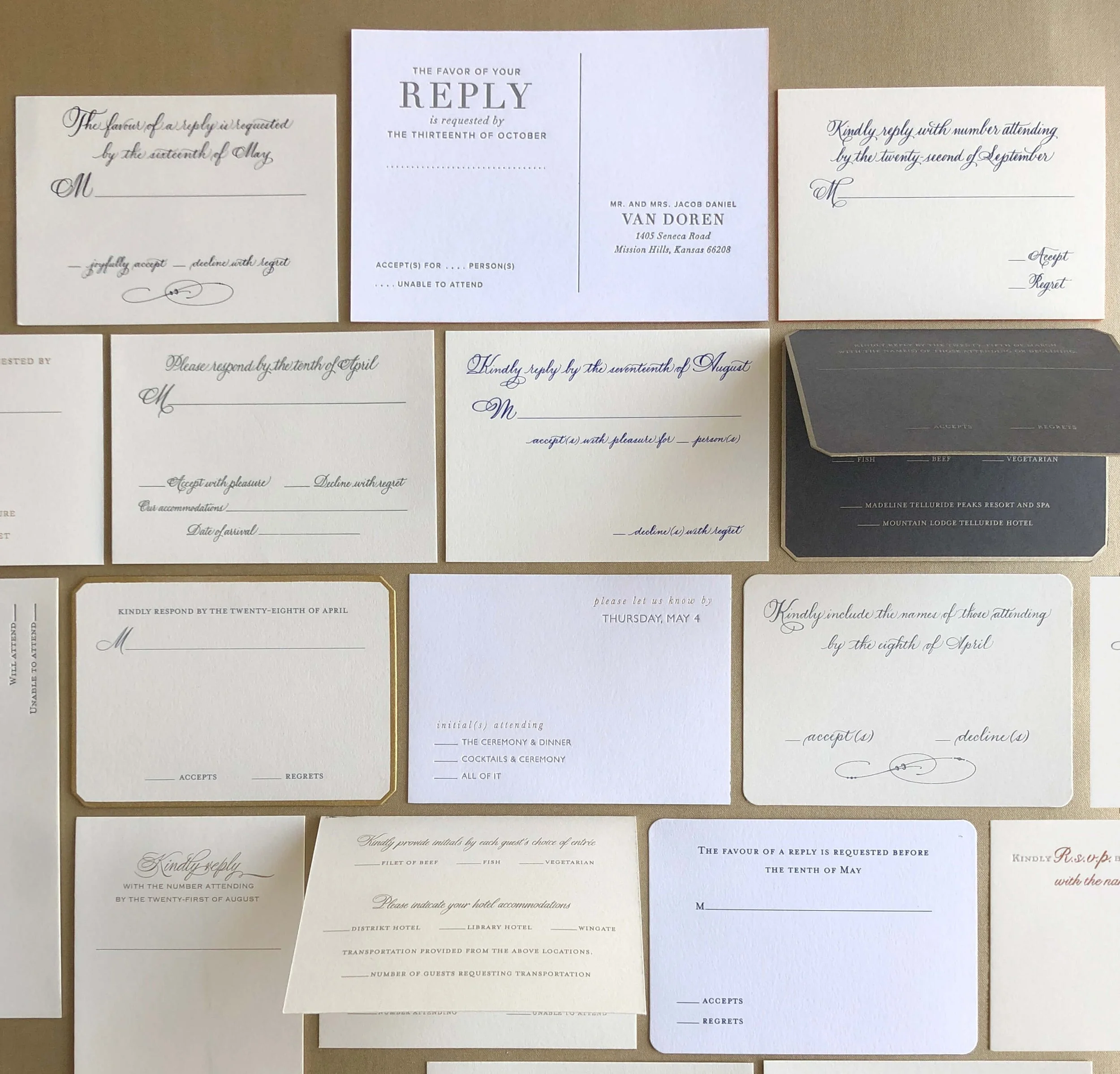REPLY CARD ETIQUETTE: GUEST EDITION
It’s been said that “the pen is mightier than the sword”, so it’s not surprising that little “written reply card” often strikes a bit of anxiety in us all.
While there are articles, blogs, interviews, and websites dedicated to the correct wording of your invitation, the etiquette concerning the written response is more elusive, often steeped in social taboos and quiet judgment, simply because the reply card itself was an invention a sophisticated, educated socialite would (gasp) never send to her equally well-heeled guests.
Let’s take a short journey through the history of that deceptively simple “reply card” and answer all of your questions. Guests, this is for you. Hosts, I have another article dedicated to creating the best reply cards to show off your etiquette skills.
In general, a seasoned host will tell you there is an organizational and sentimental advantage to receiving a written response from each guest, especially when the guest is knowledgeable, thoughtful, and capable of responding appropriately. When that is the case, the host holds an irreplaceable memory penned personally by each guest or household representative.
Guests, let’s get ready to party, so to speak. But make sure you do this first!
To Reply or Not Reply…This Is the Question
The first question…, does your host owe you the prompt to give the favor of a reply? Absolutely not. When you are invited, your first step is to reply. In the past, the inclusion of a reply card was considered lacking in grace and taste. Why? Well, in more literate times, the response was an opportunity for the well-educated guest to demonstrate their astute social skills by whipping out their stationery and pen to compose a brief reply. Per the social protocol of the day, providing paper for a guest’s response seemed boorish or even condescending. This historical context, perhaps, is why etiquette experts have skirted the issue of the response card for decades following this now-ancient social protocol.
How to Use A Reply Card
Reply with 1-2 sentences.
Write the name(s) of all attending in the same way they were used to address the envelope. If the envelope was addressed to Mr. and Mrs. John Smith, then both are responding. Start your response phrase with Mr. and Mrs. John Smith… followed by your intent to attend or inability to attend. Leave explanations to in-person conversations. Write a sentence of appreciation, well-wishes, excitement—anything sincere. Keep it short.
Use number(s) attending, not check marks
If blanks are present, a number (not a check mark or an “x” is the proper response). For example, in our case of Mr. and Mrs. Smith responding, _2_ will attend.
Other than the details mentioned above, there is no single format for proper etiquette for a reply card. The bottom example on this page has different Bell’INVITO reply cards filled in for you to peruse. Enjoy the party!
Who is included in your response?
Only those to whom the envelope is addressed are invited to the party. There are two scenarios for most formal invitations. If an inner envelope is included, it is addressed to all those in the household who are invited. The mailing envelope has the names of the head of the household only. If there is no inner envelope, the guests invited are written on the mailing envelope. If members of the household, for instance, children, are not named on the envelope, they are not invited and are not mentioned on the reply card. If their names are on the envelope, a reply should also account for them. If Mr. and Mrs. John Smith can see that the kids were invited but are planning to come party without them, the “ will attend” blank will have 2, and the “unable to attend” blank will also have the number of children invited but not attending. If you are single and a plus one was included on the envelope for you, include their name on the reply card. If no “ and guest” is on your envelope, you’re invited to attend solo. Come ready to mingle!
xx, Heather


